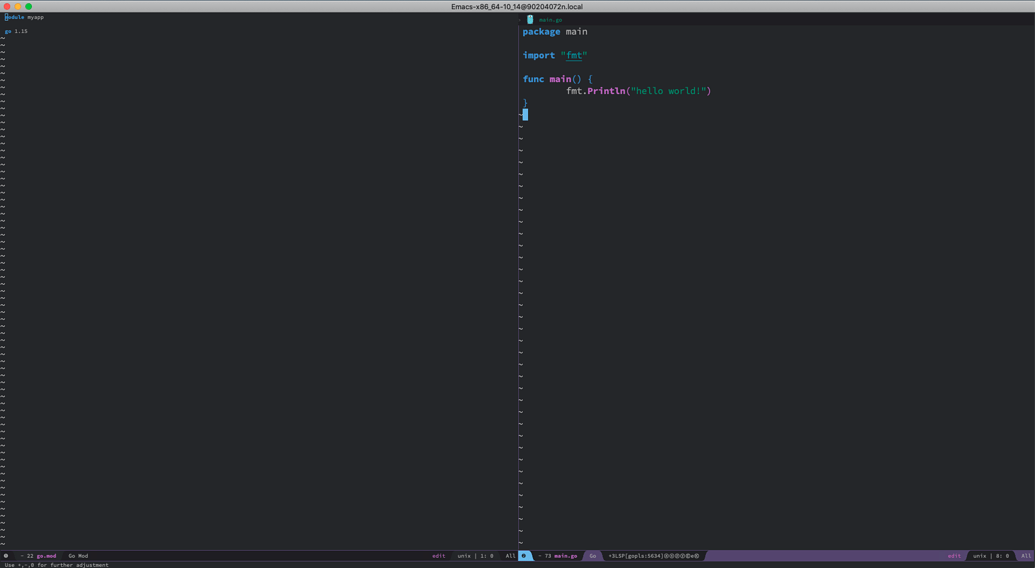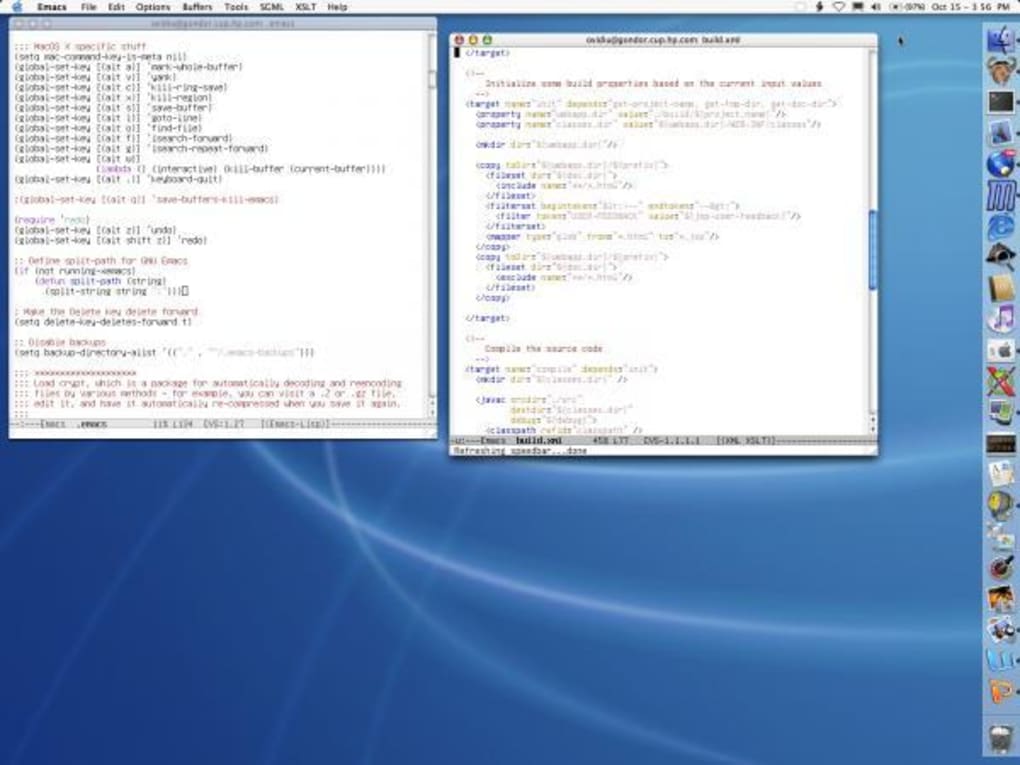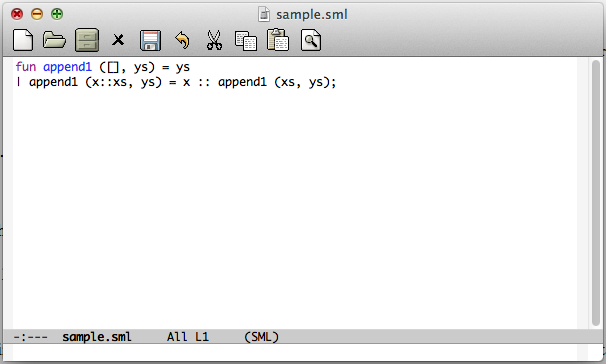

#EMACS FOR MAC OS X PASSWORD#
ICloud and Gmail require more password setup for access through imap. There are good instructions for “app-specific passwords” with iCloud & “app passwords” with Gmail respectively. ~/.maildir/example # name used for setting up mbsync an msmtp ~/.maildir/gmail # name used for setting up mbsync an msmtp ~/.maildir/icloud # name used for setting up mbsync an msmtp We will need the following directories in the user’s home directory: Meaning that the messages will be stored in a directory hierarchy as separate plain text files. ~/.maildir/certificates # we will store System root certificates here storing passwords in the keychain The easiest way to store ones password in the macOS keychain is with the security command in your terminal. For our accounts we will setup the three items mu4e-icloud, mu4e-gmail and mu4e-example.

Icloud: security add-generic-password -s mu4e-icloud -a dummy -w gmail: security add-generic-password -s mu4e-gmail -a -w example: security add-generic-password -s mu4e-example -a -wįor each account you will be prompted for the password to be stored. NOTE: The names "mu4e-icloud", "mu4e-gmail" and "mu4e-example" are entirely arbitrary. The applications mbsync and msmtp need a way to trust email servers’s tls/ssl certificates.
#EMACS FOR MAC OS X INSTALL#
Like the name suggests, msmtp is a smtp client.Recommended Installation: brew install isync.To Synchronize a maildir with an imap server we will need the command mbsync which is part of the isync application.Recommended Installation: brew install mu.To index your emails in your mail directory.Export the items with ⇧ + ⌘ + e to the file ~/.maildir/certificates/ the Application Keychain will use the list of certificate Authority trusted by the macOS system. Recommended Installation: brew install msmtp.According to the website, it transmits a mail to an smtp server which takes care of further delivery. The settings used by mbsync are stored in the file ~/.mbsyncrc by default. User "security find-generic-password -s mu4e-gmail -a dummy -w" PassCmd "security find-generic-password -s mu4e-icloud -a dummy -w"ĬertificateFile ~/.maildir/certificates/root-certificates.pem NOTE: Which imap servers, ports and credentials to use will be most definitely documented by your email provider. User "security find-generic-password -s mu4e-example -a -w"īare with me here. emacs has only a minimal amount of OS-based conditionals in it.This part might seem a tad to much, but I would have been happy to have it, back then when. I tend to run Emacs across a myriad of platforms (Linux, OSX, Windows, FreeBSD to just list a few) and having a “stock” Emacs experience on all of these platforms means that my.

It probably is - after all, I could’ve just remapped the key combination in my. Thanks, Davide!Īnd yes, it might come across as silly to rebuilding the editor just to get my preferred key combination back.

He just upgraded it to Emacs 26.2, so this morning I rebuild my Emacs on OSX again and ended up where I wanted to be, with the latest version of Emacs, keyword expansion as I expected it to work, and a working GUI. Malcolm Purvis had been kind enough to point out in a comment to my original homebrew Emacs post that Davide Restivo had created a brew tap that brings the necessary –with-cocoa build option back. Instead of expanding keywords, I kept opening menus. Unfortunately, with Meta mapped to the Apple Command key, Shift-Meta-7 is a menu shortcut. My muscle memory says that I use Shift-Meta-7 (aka Meta-/ ) for keyword expansion as I use a German keyboard layout most of the time. It had have one niggling problem for me, though. I did end up installing the homebrew Emacs for Mac tap which restored the GUI functionality. That’s a pretty serious restriction for me as I usually end up with multiple frames across my desktop. In a previous post I mentioned that I upgraded my homebrew install of Emacs after Emacs 26.2 was released, and noticed that I had lost its GUI functionality.


 0 kommentar(er)
0 kommentar(er)
